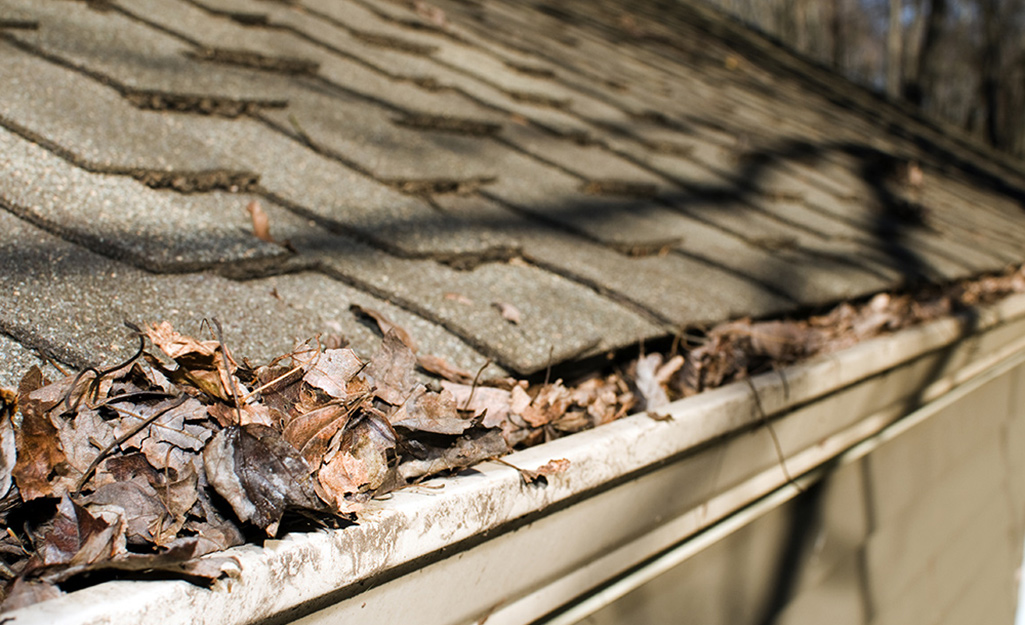How to Clean Gutters
Cleaning gutters is a necessary job that’s easy to put off. Rain gutters get clogged with leaves and other debris over time, leading to more work in the long run. The good news is, it’s not hard to clean gutters. Save yourself money and time and get the job done right. Use this guide to learn the basics of how and why you need to cleaning gutter and downspouts.
Why is it Important to Clean Your Gutters?

A home's gutter system controls the flow of rainwater. This protects your home’s roof, walls, foundation and landscape. If debris builds up in them, it could lead to sagging gutters, mold growth, wet basements, a leaky roof or water damage to the interior or exterior of your home. Gutters filled with debris also make nice homes for rodents and other pests. Letting your gutter maintenance go can lead to costly repairs down the line.
Gutters need to be cleaned at least twice a year–in the spring and fall. If you have pine trees near your home, they will need cleaning every three months to reduce the potential for clogging. Hiring someone to clean your gutters is an option if you are short on time or not comfortable on ladders. Expect to spend anywhere around $100-250 for 200 linear feet of gutters for this service. It will cost more if you live in a two- or three-story home or if you have a steep roof.
How to Tell if Gutters Need to be Replaced or Cleaned

Regular maintenance will prolong the longevity of gutters. At some point, they will need repairing or replacement to help protect your home from water damage. Here are a few signs that will help you determine if your gutters need to be repaired or replaced.
- Cracks or splits. Even small cracks will grow, allowing water to seep into the fascia boards behind the gutters, the shingles above the gutter and the foundation below. Replace any split or crack sections of gutter.
- Paint damage and rust. The paint on your gutters is weather resistant. Peeling paint or rust indicates that water is present on the surface on a continuous basis. Look for clogs and remove debris to get the water flowing. Replace or touch up the paint on the damaged section of the gutter.
- Pools of water and mold. If you see standing water or mildew near the foundation, it can indicate that the gutters are clogged or there could be a defect in the gutter system. Remove the clog. If the problem persists, replace that section of gutter and downspout.
- Water damage or water marks. Inspect directly beneath the gutters on a dry, sunny day for any evidence of water damage. Water damage underneath gutters can indicate that they are leaking or overflowing with water. Look for possible blockages in the area. If there are none, this indicates that the section has a crack or a leak which will need to be repaired or replaced.
- Gutter sag. This is a definite sign that it’s time to replace gutters. Gutters should never sag or pull away from the house. Sagging gutters means that it is no longer draining properly and needs to be replaced. This may be a good time to look into upgrading your old ones with gutter guards or screens or with seamless gutters.
Supplies for Cleaning Gutters

The basic tools needed for cleaning gutters are simple: ladder, hose and a trowel or scoop. There are other tools like a pressure washer and specialty gutter cleaner hose nozzle that will make the job easier. The Home Depot carries all the seasonal gutter cleaning tools and supplies you will need to get the job done.
Readmore: The Best Way to Clean Gutters